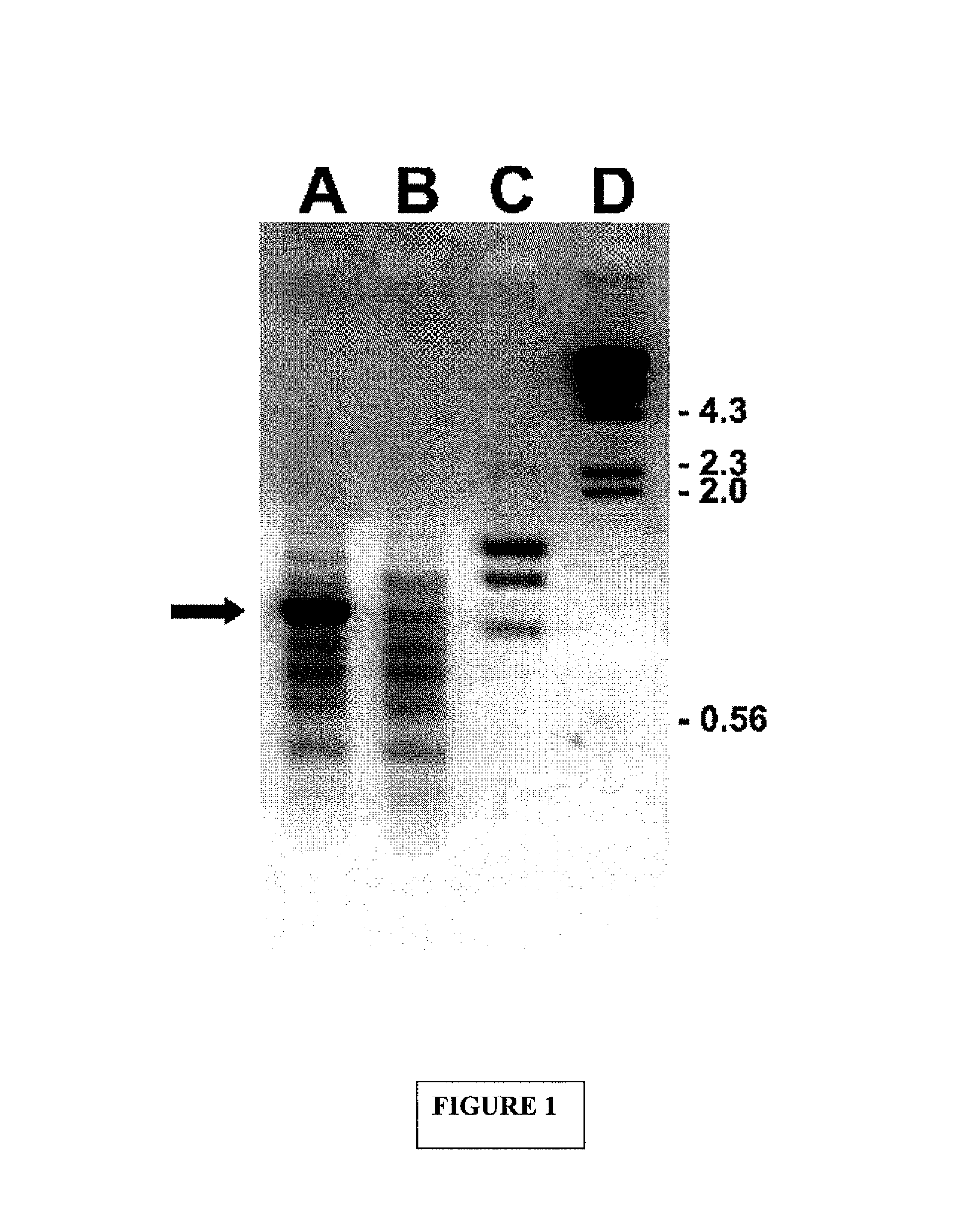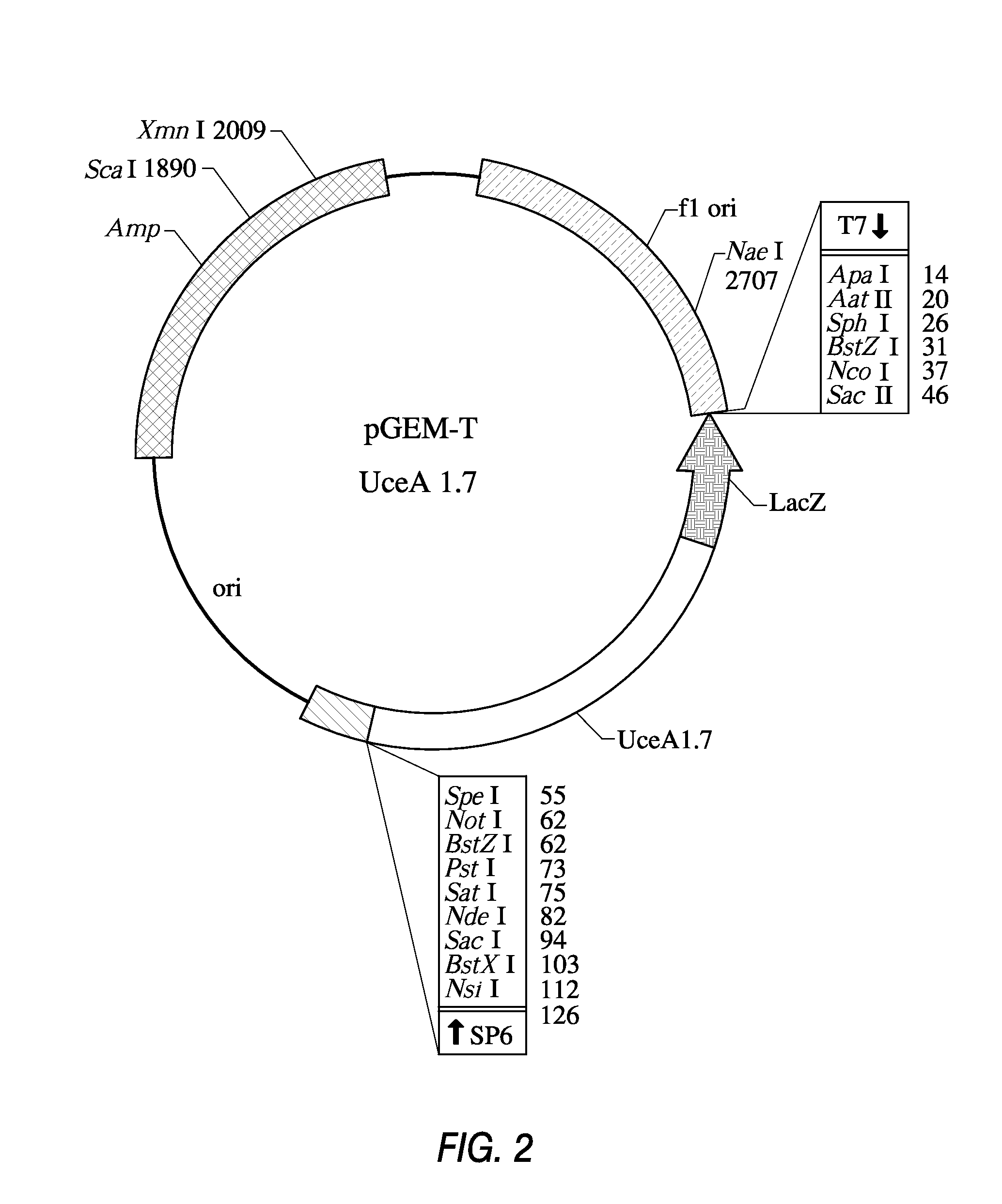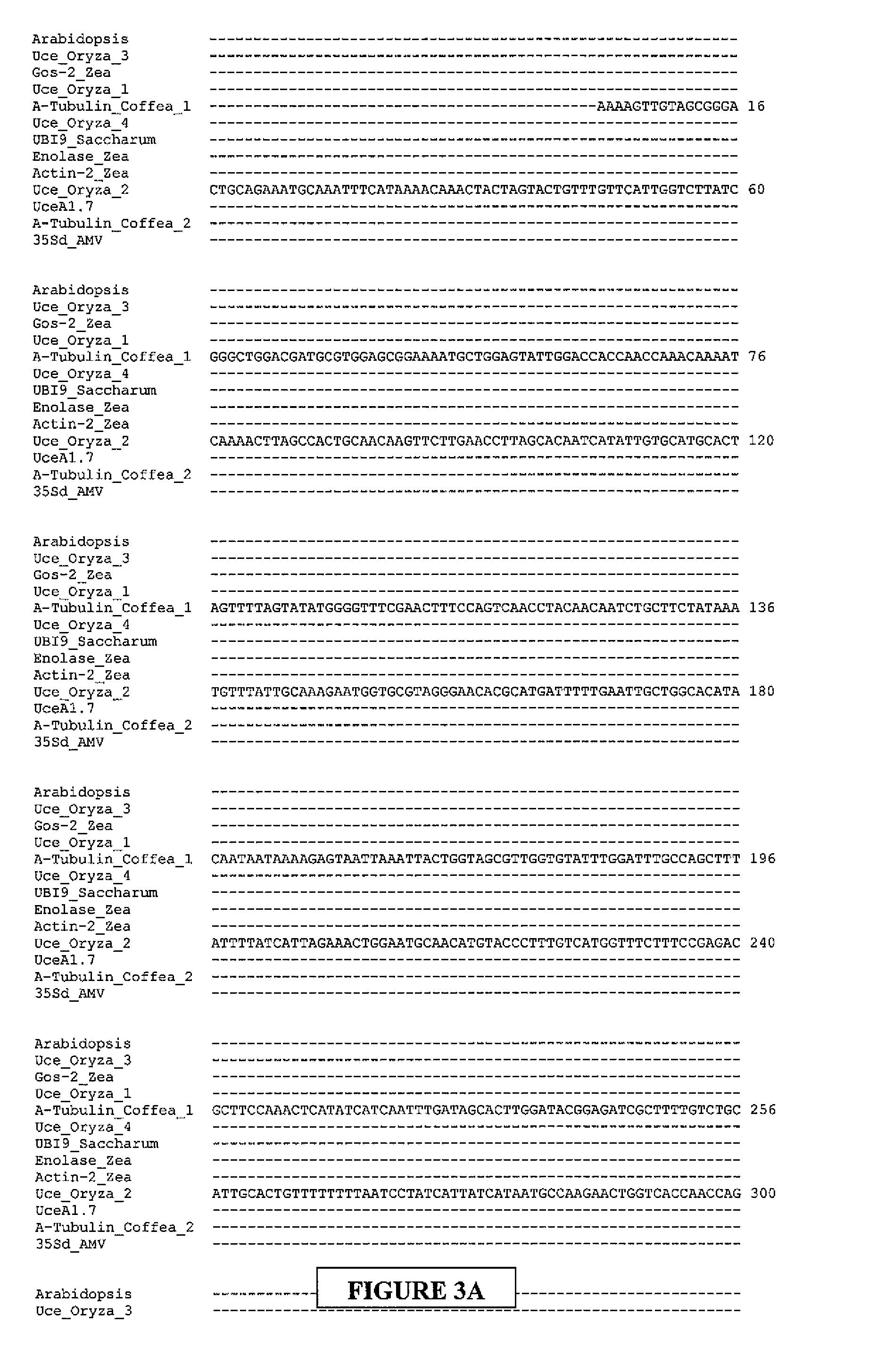Compositions and methods for modifying gene expression using the promoter of ubiquitin conjugating protein coding gene of cotton plants
a technology of ubiquitin conjugating protein and promoter, which is applied in the field of new promoters for gene expression in plants, can solve the problems of increasing production costs, few effective promoters for expressing cotton plants available on the market, and none that demonstrate superior expression efficiency compared, and achieves stable incorporation
- Summary
- Abstract
- Description
- Claims
- Application Information
AI Technical Summary
Benefits of technology
Problems solved by technology
Method used
Image
Examples
example 1
Isolation of the DNA Promoter Sequence for the Ubiquitin Conjugating Protein Gene for Gossypium Hirsutum
[0099]Extraction of DNA in cotton was performed using the DNeasy plant mini Kit 50 by QIAGEN. The DNA sequence responsible for expression of the ubiquitin conjugating protein gene was isolated from cotton plants using the “Tail-PCR” technique. “Tail-PCR” (Thermal Asymmetric InterLaced PCR) consists in applying the PCR (Polymerase Chain Reaction) technique to allow the isolation of the DNA segments adjacent to known sequences using specific sequential primers along with small randomly degenerated primers in a manner as to thermally control amplification efficiency related to specific and unspecific products (Liu, Y. & Whittier, R. F. (1995). Thermal asymmetric interlaced PCR: Automatable amplification and sequencing of insert end fragments from P1 and YAC clones for chromosome walking. Genomics 25, 674-681.)
[0100]Interspersing high and low stringency cycles, specific products are ...
example 2
[0108]The comparative analysis of the uceA1.7 promoter sequence for the ubiquitin conjugating protein of cotton with other constitutive promoters of plants showed that the uceA1.7 promoter is significantly different from other promoters described in the literature (FIG. 3A-F).
[0109]Table 1 shows relatively low sequence identities between the main constitutive promoters described in the literature and the promoter of the present invention (uceA1.7). The promoters were selected from those with the greatest identity, in accordance with searches in the NCBI databases (ncbi.nlm.nih.gov).
[0110]
TABLE 1Constitutive promotersOrganismsUceA1.7 (% Identity)Trehalose 6-phosphateArabidopsis thaliana38.2synthase of A. thalianaUce_Oryza_3Oryza sativa20.0Gos-2_ZeaZea mays27.2Uce_Oryza_1Oryza sativa40.7A-Tubulin_Coffea_1Coffea37.1Uce_Oryza_4Oriza sativa33.2UBI9_SaccharumSaccharum38.8Enolase_ZeaZea mays33.5Actin-2_ZeaZea mays33.3Uce_Oryza_2Oryza sativa35.3A-Tubulin_Coffea_2Coffea44.335Sd_AMVAlfalfa mo...
example 3
Cloning of the uceA 1.7 Promoter Sequence of the Ubiquitin Conjugating Protein Gene of Cotton in a Plant Transforming Vector (pCAMBIA 1391)
[0113]The transformed bacteria DNA containing the recombinant vector, as such, the UCE cotton promoter cloned to vector pGEM-T was digested with the Nco I and Spe I restriction enzymes. Generally, 5 U of enzyme for every μg of DNA was used, in OPA buffer (One-Phor-All) by Pharmacia Biotech in a final concentration of 2×, at 37° C. for 3 hours. The enzymes do not cut the insert, but the flanking cloning site of the vector and the 1.0 kb insert purified with Gene Clean (Bio 101 System). Vector pCAMBIA1391 (FIG. 4) was digested with Nco I and Spe I and purified with the Gene Clean kit (Bio 101 System). The 1.0 kb insert was linked to vector pCAMBIA1391 with T4 DNA ligase (FIG. 4). The DNA concentration (vector pCAMBIA: promoter uceA1.7) used in the ligation system was performed at a molar rate of 1:3. The ligation reaction was performed in buffer of...
PUM
| Property | Measurement | Unit |
|---|---|---|
| Tm | aaaaa | aaaaa |
| pH | aaaaa | aaaaa |
| concentration | aaaaa | aaaaa |
Abstract
Description
Claims
Application Information
 Login to View More
Login to View More - R&D
- Intellectual Property
- Life Sciences
- Materials
- Tech Scout
- Unparalleled Data Quality
- Higher Quality Content
- 60% Fewer Hallucinations
Browse by: Latest US Patents, China's latest patents, Technical Efficacy Thesaurus, Application Domain, Technology Topic, Popular Technical Reports.
© 2025 PatSnap. All rights reserved.Legal|Privacy policy|Modern Slavery Act Transparency Statement|Sitemap|About US| Contact US: help@patsnap.com



